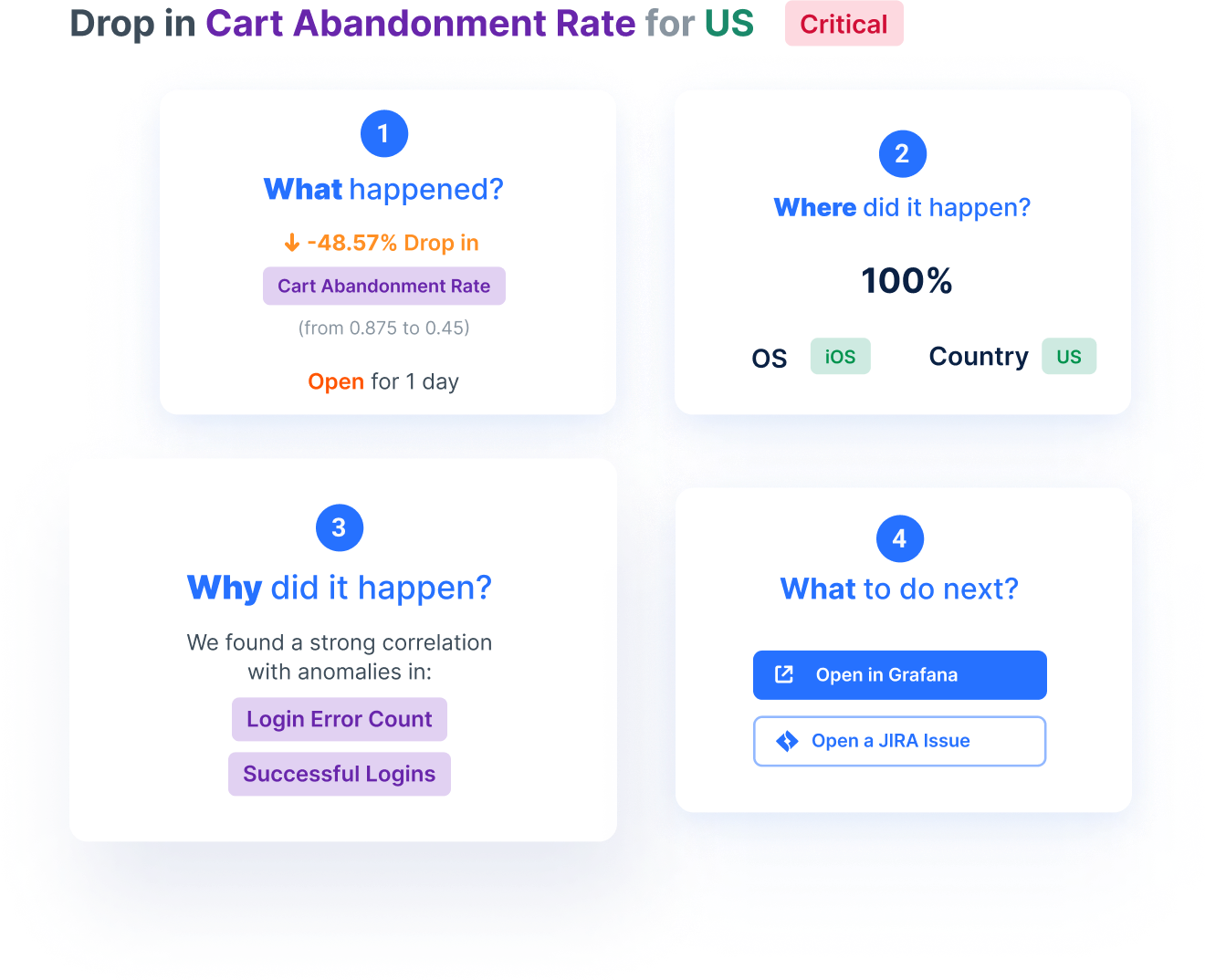Augmented analytics is here. You’ve read about it, you’ve heard about it, and you may even be in the process of acquiring systems running it. But what exactly is it, and how can you determine whether it’s right for your data-driven business? As the industry leader in AI/ML-powered analytics technology, we’re here with answers to these critical questions.
Augmented Analytics Explained
According to Gartner’s Market Definition, augmented analytics refers to “the use of low-code/no-code tools, often leveraging machine learning (ML), to automate various tasks required during the analytics process.”
Products in this category leverage technologies to automatically discover, visualize, and contextualize insights like correlations, exceptions, drivers, and predictions. The general purpose is to democratize analytics by delivering insights at every level of an organization rather than limiting its power to dedicated data science and business intelligence teams.
Machine learning capabilities are at the core of any augmented analytics toolset. ML reduces and, in some cases, eliminates much of the manual work associated with generating insights and decision support for organizations.
In addition, augmented analytics tools can acquire industry or organization-specific knowledge over time, creating more relevant and effective business results for its users. This automation and localization are critical to democratization and data-driven digital transformation efforts.
While many tools in the analytics space offer some form of automation, it’s essential to recognize the distinction between automating processes and automating data-driven decision-making. Augmented analytics uses AI and machine learning to automate insights in critical timeframes and make it scaleable.
The Benefits of Augmented Analytics
Organizations that embrace augmented analytics enjoy democratized capabilities that proliferate throughout the organization. Let’s take a closer look at some of the critical benefits:
Empower human decisions with greater accuracy
Computers and software excel at taking repetitive, error-prone calculations out of human hands. Machine Learning takes this concept to the next level by leaving no stone unturned, analyzing every data point, and ensuring human decision-makers have the full breadth of information to empower their decisions.
Real-time insights for business agility
Augmented analytics platforms shine a light on relevant data insights and have the intelligence to identify additional paths for analysts to explore. Routine user and system behaviors are baselined over time so that opportunities and anomalies are readily apparent. Over time, the business’s responses to these events can further enhance analytics capabilities for more personalized insights.
Contextualized analysis
Augmented analytics helps companies democratize their analytics because it’s far more user-friendly than disparate BI tools covering dozens or hundreds of data sources. This is critical because it enables business users, rather than data scientists, to apply their knowledge and expertise in evaluating the information. The solution should integrate seamlessly into existing business workflows and BI solutions that are already familiar to key decision-makers.
Augmented Analytics is the future of BI
Organizations will become more data-driven as it becomes clearer that superior analytic capabilities are the key to maintaining a competitive advantage. Future data leaders will need tools to improve business outcomes at the speed of relevance with sufficient scalability. The number of datasets is constantly growing, so meeting this need will require contextual insights from a sea of interconnected data stores.
Gartner’s Top Trends for Data and Analytics report identified the decline of the dashboard and the rise of the augmented consumer as the top trends impacting data analytics in the future.
The augmented consumer represents an evolutionary trend across the industry towards democratization, putting insights directly into the hands of the decision-maker rather than relying on specialists to interpret and deliver information. Solid data and industry surveys back Gartner’s findings related to dashboards. Experts expect they will be complimented and eventually replaced by automated, easily consumed, dynamic insights delivered as required.
Augmented Analytics with Anodot
Today, even minor changes in patterns and trends across billions of data points might signal an opportunity or a risk to be overcome. As data becomes democratized and core to decision-making across every business layer, companies are scrambling to evolve their data strategies beyond traditional BI and dashboards.
Anodot enables data-driven organizations to democratize their data at scale with autonomous business monitoring. Users can get the full context of what is happening and easily initiate automated actions for the fastest time to resolution.
Gartner predicts that companies will eschew their dashboards for automated, dynamically generated insights by 2025. Anodot helps customers achieve these results today with a platform that delivers contextualized insights in real-time. Anodot unburdens data science and BI teams from wrangling with manual data tasks to focus on developing models and metrics to improve their companies’ competitive advantage.
Companies that use Anodot’s machine learning platform to detect business incidents improve their time to detect anomalies and opportunities by 80 percent and reduce false-positive alert noise by 95 percent. The future of business decisions may lie with augmented analytics, but at Anodot, that future is now.





